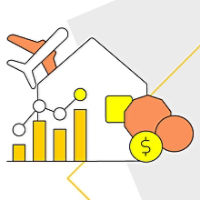The strength in spending on Household Goods was driven by spending at online marketplaces, hardware stores and discount department stores. Ten of the 12 spending categories rose in October, with only Education (-1.3 per cent) and Utilities (-3.4 per cent) falling, the latter due to government rebates on energy bills.
“Spending rose marginally in October as income tax cuts, lower petrol prices and energy rebates freed some consumers up to spend on discretionary items. It’s important to note however that this increase in discretionary spending only partially offset the fall seen in September as the October boost was driven by a number of one-off major events,” CBA Chief Economist Stephen Halmarick said.
The annual rate of spending growth increased to 4.9 per cent from 2.1 per cent in September, continuing the choppiness in spending seen throughout the year. This was likely also boosted by an extra weekend day in October 2024 relative to last year.
On an annual basis, the fastest growing spending categories in the year to date are Health (+10.6 per cent), Recreation (10.5 per cent) and Communications and Digital (+8.4 per cent). The only falls in spending in the year to date can be seen in the Transport (-5.8 per cent) and Utilities (-5 per cent) categories.
Spending by renters continues to be the weakest sector by home ownership status, rising by just 1.8 per cent in the year to date, compared to those with a mortgage (+3.4 per cent) and those who own their home outright (+4.4 per cent).
Mr. Halmarick said household spending was unlikely to meaningfully move higher until there is an interest rate cut.
“Higher disposable income from the July income tax cuts, combined with lower petrol prices and lower utility bills may have helped strengthen spending in recent months, however the increase is likely softer than would have been expected by the RBA. We don’t anticipate seeing a substantial increase in consumer spending until the RBA commences an interest rate easing cycle, which we now expect in February 2025,” Mr. Halmarick said.
The CommBank HSI Index tracks month-on-month data at a macro level and is based on de-identified payments data from approximately 7 million CBA customers, comprising roughly 30 per cent of all Australian consumer transactions.


